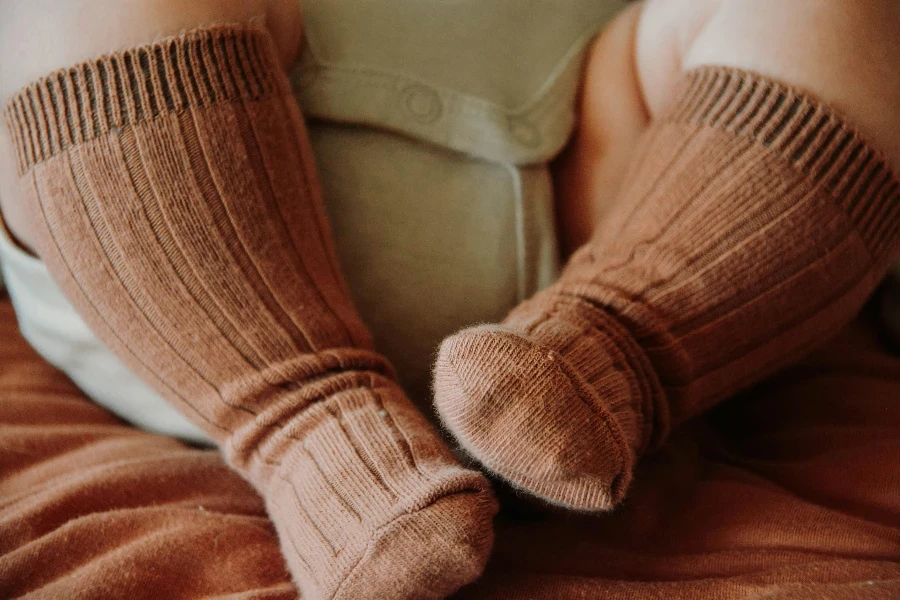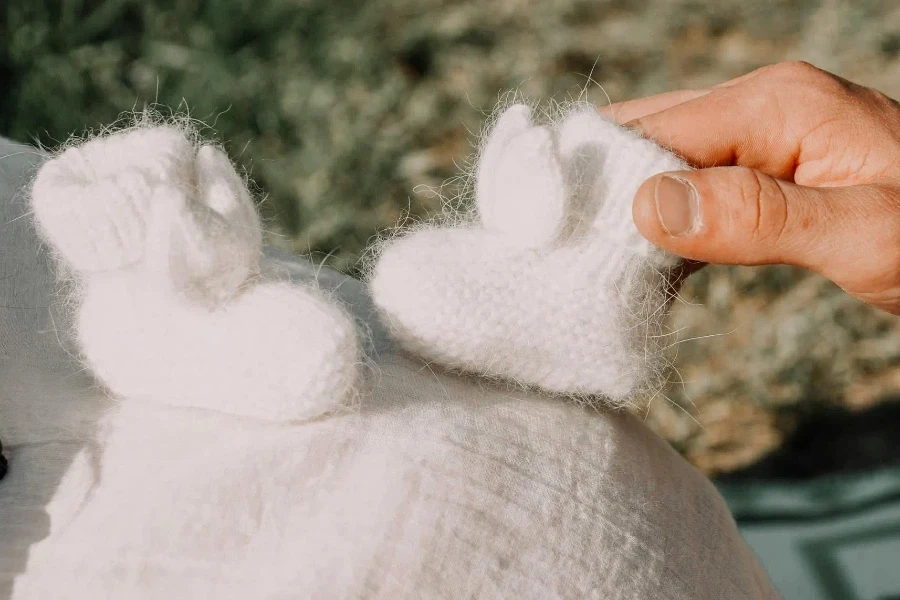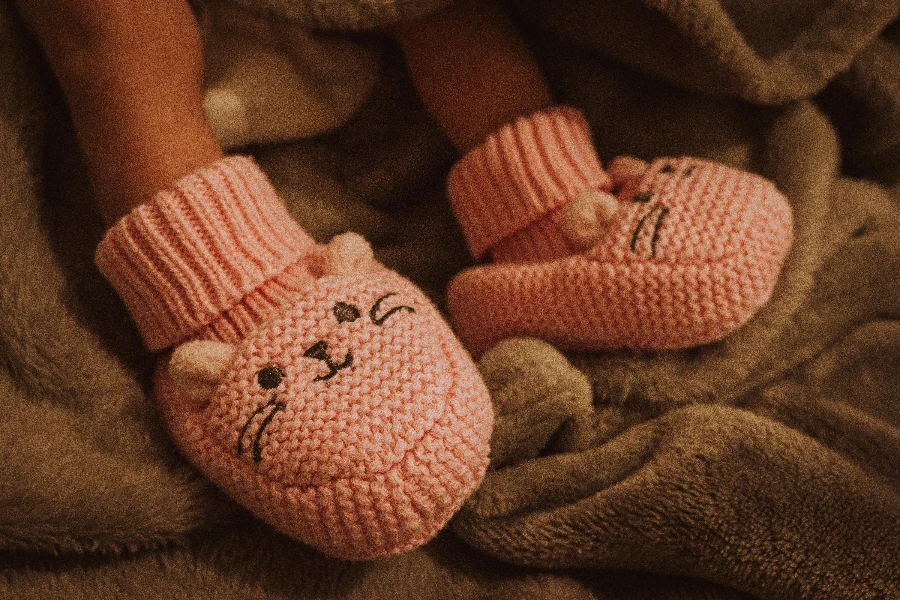The baby socks market is experiencing significant growth, driven by increasing demand for specialized and innovative products. As parents become more conscious of their children’s comfort and health, the market for baby socks is expanding rapidly. This article delves into the global market trends, key players, and future prospects of the baby socks industry.
Table of Contents:
– Market Overview
– Types of Baby Socks
– Design and Features
– Buying Guide
– Conclusion
Market Overview

Global Market Trends
The global socks market, including baby socks, is on a robust growth trajectory. According to a report by Research and Markets, the socks market is forecasted to grow by USD 16.44 billion during 2023-2028, accelerating at a CAGR of 5.82% during the forecast period. This growth is driven by rising demand for specialized socks products, product innovation, and advancements leading to portfolio extension. The baby socks segment is benefiting from these trends as parents seek high-quality, comfortable, and safe products for their infants.
The market is also witnessing a surge in demand for socks that cater to specific needs, such as anti-slip features and organic materials. The launch of socks that track the temperature, movement, and location of infants is one of the prime reasons driving the market growth. Additionally, advancements in the socks industry catering to healthcare and the growing demand for waterproof antibacterial socks are expected to lead to sizable demand in the market.
Key Players in the Baby Socks Market
The baby socks market is highly competitive, with several key players dominating the landscape. Companies such as Adidas AG, Nike Inc., and Hanesbrands Inc. are leading the market with their extensive product portfolios and strong brand presence.
Adidas AG, for instance, has been focusing on product innovation and sustainability, introducing baby socks made from organic and recycled materials. Nike Inc. is leveraging its strong brand reputation and extensive distribution network to capture a significant share of the market. Hanesbrands Inc. is known for its high-quality and affordable baby socks, catering to a broad consumer base.
In addition to these major players, several smaller companies and startups are making their mark in the baby socks market. Companies like Happy Socks and Bombas are gaining popularity with their unique designs and commitment to social causes. These companies are leveraging online platforms and social media to reach a wider audience and build brand loyalty.
Types of Baby Socks

Cotton Baby Socks
Cotton baby socks are a staple in every baby’s wardrobe due to their comfort and breathability. Cotton is a natural fiber that is soft and gentle on a baby’s delicate skin, making it an ideal material for baby socks. These socks are highly absorbent, which helps to keep a baby’s feet dry and comfortable. Additionally, cotton socks are easy to clean and maintain, which is a significant advantage for busy parents. The versatility of cotton allows for various designs and patterns, making it easy to find a pair that suits any outfit or occasion. Brands like Elepbaby and WELLBER are known for their high-quality cotton baby socks, which are both affordable and durable.
Wool Baby Socks
Wool baby socks are perfect for colder climates as they provide excellent warmth and insulation. Wool is a natural fiber that is not only warm but also breathable, allowing for temperature regulation to keep a baby’s feet comfortable. Wool socks are also known for their moisture-wicking properties, which help to keep feet dry by drawing moisture away from the skin. This is particularly important in preventing fungal infections and other skin issues. Wool baby socks are often made from merino wool, which is softer and less likely to cause irritation compared to regular wool. Brands like Goodbaby offer a range of wool baby socks that are designed to keep little feet warm and cozy during the winter months.
Bamboo Baby Socks
Bamboo baby socks are gaining popularity due to their eco-friendly properties and exceptional comfort. Bamboo is a sustainable material that grows quickly and requires fewer resources compared to other fibers. Bamboo socks are incredibly soft and have natural antibacterial properties, making them an excellent choice for babies with sensitive skin. These socks are also highly breathable and moisture-wicking, ensuring that a baby’s feet stay dry and comfortable. Bamboo baby socks are often blended with other materials like cotton to enhance their durability and stretch. Brands like Ouyou and Xinsong are known for their bamboo baby socks, which combine sustainability with comfort and style.
Design and Features

Anti-Slip Baby Socks
As babies begin to crawl and take their first steps, anti-slip baby socks become essential. These socks feature rubberized or silicone grips on the soles, providing extra traction to prevent slipping and falling. This design is particularly important for babies who are learning to walk on smooth surfaces like hardwood floors or tiles. Anti-slip baby socks come in various designs and colors, making them both functional and fashionable. The grips are often shaped like cute characters or patterns, adding a playful element to the socks. Brands like Jiuaijiu offer a wide range of anti-slip baby socks that are both practical and adorable.
Organic Baby Socks
Organic baby socks are made from materials that are grown without the use of harmful chemicals or pesticides. These socks are an excellent choice for parents who are concerned about the environmental impact of their purchases and the potential exposure of their babies to toxic substances. Organic cotton and bamboo are common materials used in organic baby socks, providing the same comfort and breathability as their non-organic counterparts. Additionally, organic baby socks are often dyed with natural or low-impact dyes, reducing the risk of skin irritation. Brands like Misha & Puff are known for their organic baby socks, which combine sustainability with high-quality craftsmanship.
Seasonal Baby Socks
Seasonal baby socks are designed to provide the appropriate level of warmth and comfort for different times of the year. In the summer, lightweight and breathable socks made from thin cotton or bamboo are ideal for keeping a baby’s feet cool and dry. These socks often feature fun, bright patterns that are perfect for the warmer months. In the spring and autumn, slightly thicker cotton socks provide the right balance of warmth and breathability. For winter, wool or cashmere socks are the best choice, offering superior insulation to keep little feet warm in cold weather. Brands like Suede Daze and Oilily offer a variety of seasonal baby socks that cater to different climates and preferences.
Buying Guide

Sizing and Fit
Choosing the right size of baby socks is crucial for ensuring comfort and proper foot development. Socks that are too tight can restrict blood circulation and cause discomfort, while socks that are too loose may slip off and fail to provide adequate protection. It is essential to measure a baby’s foot length and refer to the size chart provided by the manufacturer to select the appropriate size. Most brands offer a range of sizes that correspond to different age groups, making it easier for parents to find the right fit. Additionally, some socks come with elastic cuffs that provide a secure fit without being too tight, ensuring that the socks stay in place throughout the day.
Material Considerations
The material of baby socks plays a significant role in their comfort, durability, and overall performance. Cotton is a popular choice due to its softness, breathability, and ease of maintenance. Wool is ideal for colder climates, offering excellent warmth and moisture-wicking properties. Bamboo is an eco-friendly option that is soft, breathable, and naturally antibacterial. When selecting baby socks, it is important to consider the specific needs of the baby and the climate in which they will be worn. For example, cotton socks are suitable for everyday wear, while wool socks are better for winter months. Additionally, parents should look for socks made from high-quality materials that are free from harmful chemicals and dyes.
Price Range
The price of baby socks can vary widely depending on the brand, material, and design. High-quality cotton and bamboo socks are generally available at lower price points, while wool and organic socks may be more expensive due to the cost of materials and production processes. It is important for parents to consider their budget and the frequency with which socks will need to be replaced as the baby grows. Buying in bulk can be a cost-effective option, especially for everyday socks that are likely to see frequent use. Brands like Elepbaby and WELLBER offer a range of baby socks at different price points, ensuring that there is something to suit every budget.
Conclusion
Marketing baby socks effectively requires a combination of social media marketing, influencer collaborations, and seasonal promotions. By leveraging high-quality visual content, engaging with influencers, and creating timely promotions, you can build a strong brand presence and drive sales. Remember to focus on the unique features and benefits of your baby socks, such as comfort, durability, and adorable designs, to resonate with parents and caregivers. With the right strategies in place, your baby socks brand can thrive in the competitive market and become a go-to choice for parents seeking the best for their little ones.




